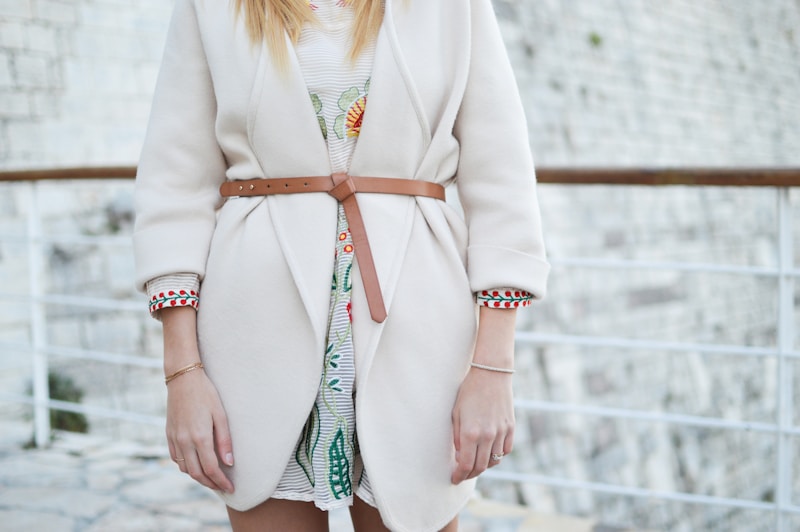Unlocking Innovation: Collaborative Design Processes in Bridal Fashion
Unlocking Innovation: Collaborative Design Processes in Bridal Fashion
Understanding the Collaborative Design Processes in Bridal Fashion
Bridal fashion has evolved significantly over the past few decades, transitioning from traditional, individualistic designs to a more collective approach that incorporates various stakeholders. This shift has led to the rise of collaborative design processes that not only enhance creativity but also ensure the final product resonates with modern brides' preferences. In this article, we will delve deep into how collaborative design works in the bridal fashion industry, exploring its benefits, challenges, and key players involved.
The Concept of Collaborative Design
Collaborative design refers to the process of bringing together multiple stakeholders in a shared creative environment to collectively contribute ideas, styles, and designs. This method fosters innovation and diversity, resulting in unique bridal collections that cater to varied tastes. In bridal fashion, collaborators can include fashion designers, bridal boutiques, fabric suppliers, brides, and even influencers.
Key Benefits of Collaborative Design Processes in Bridal Fashion
| Benefit | Description |
| Enhanced Creativity | By pooling ideas from diverse sources, the creative potential is maximized, leading to distinctive designs. |
| Broader Market Appeal | Collaborating with various stakeholders allows designers to create pieces that appeal to a wider range of brides. |
| Sustainability | Joint efforts can lead to more sustainable practices through careful resource management and shared production methods. |
| Improved Communication | Regular collaboration fosters open communication, which is essential for meeting clients' needs and expectations. |
The Role of Technology in Collaborative Design
In today's digital age, technology plays a vital role in the collaborative design processes of bridal fashion. Tools such as virtual design software, online collaboration platforms, and 3D printing have transformed how designers work together. For instance,  can facilitate real-time collaboration, enabling teams to visualize designs on screen before committing to physical prototypes.
can facilitate real-time collaboration, enabling teams to visualize designs on screen before committing to physical prototypes.
Examples of Collaborative Projects in Bridal Fashion
Some notable brands have effectively utilized collaborative design processes to create successful bridal collections. These collaborations often blend various styles, catering to the eclectic tastes of today’s brides. For instance, a renowned designer may collaborate with a popular influencer to create a limited-edition wedding gown, drawing from both parties' aesthetics. This not only gives the gown a unique flair but also expands its market reach.
The Stakeholders in Bridal Fashion Design
The collaborative design process in bridal fashion involves various stakeholders, each contributing unique expertise. The primary players include:
- Fashion Designers: Creatives who conceptualize the designs.
- Bridal Boutiques: Retailers who provide insight into customer preferences.
- Fabric Suppliers: Companies offering materials that can affect the design and price.
- Brides: The ultimate clients who influence style direction.
- Influencers: Popular figures who assist in marketing and trendsetting.
Challenges of Collaborative Design Processes
Despite the many advantages, collaborative design processes in bridal fashion come with challenges:
- Alignment of Vision: Ensuring that all stakeholders share a common creative vision can be difficult.
- Time Management: Collaborating often requires more time, which can be a disadvantage in a fast-paced industry.
- Communication Barriers: Different stakeholders may have different terminologies and expectations which can lead to misunderstandings.
Case Studies in Collaborative Bridal Design
Final Thoughts on Collaborative Design Processes in Bridal Fashion
As the bridal fashion industry continues to evolve, the need for collaborative design processes becomes increasingly evident. The shift towards collective creativity presents numerous opportunities for innovation, market expansion, and sustainability. By embracing collaborative methodologies, designers and brands can cater to the diverse needs of modern brides while enhancing their creative output.
In summary, it is essential for stakeholders in the bridal fashion industry to acknowledge and harness the power of collaboration. Moving forward, the focus should remain on improving communication channels and utilizing technology to create more streamlined collaborative processes. Whether you are a designer, retailer, or bride, embracing collaboration may just lead to the wedding dress of your dreams.
As you consider embarking on this journey into bridal fashion, remember that collaboration isn't merely about working together; it's about innovating together. Keep these insights and tips in mind to successfully navigate the collaborative landscape of bridal design.
